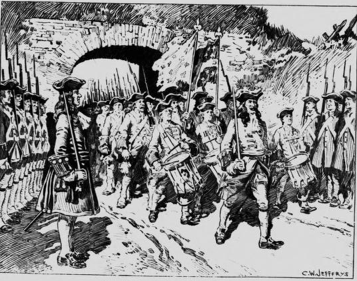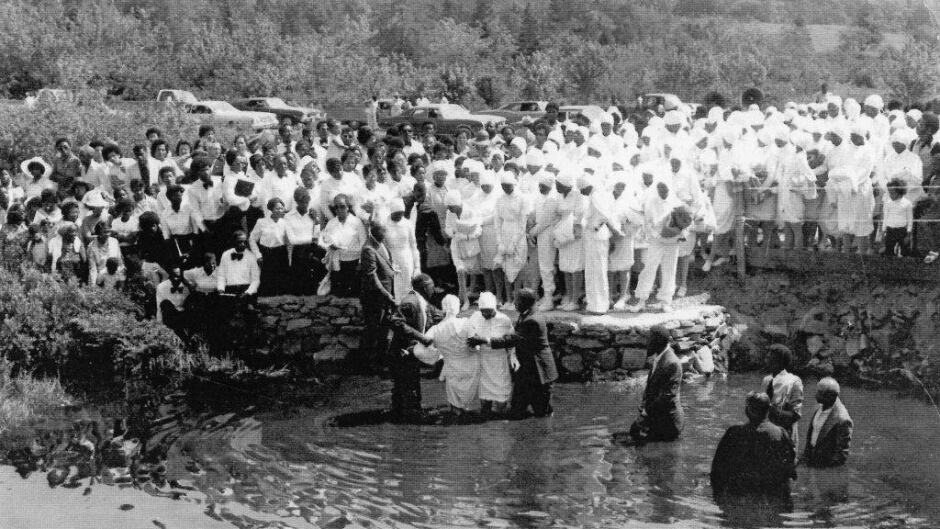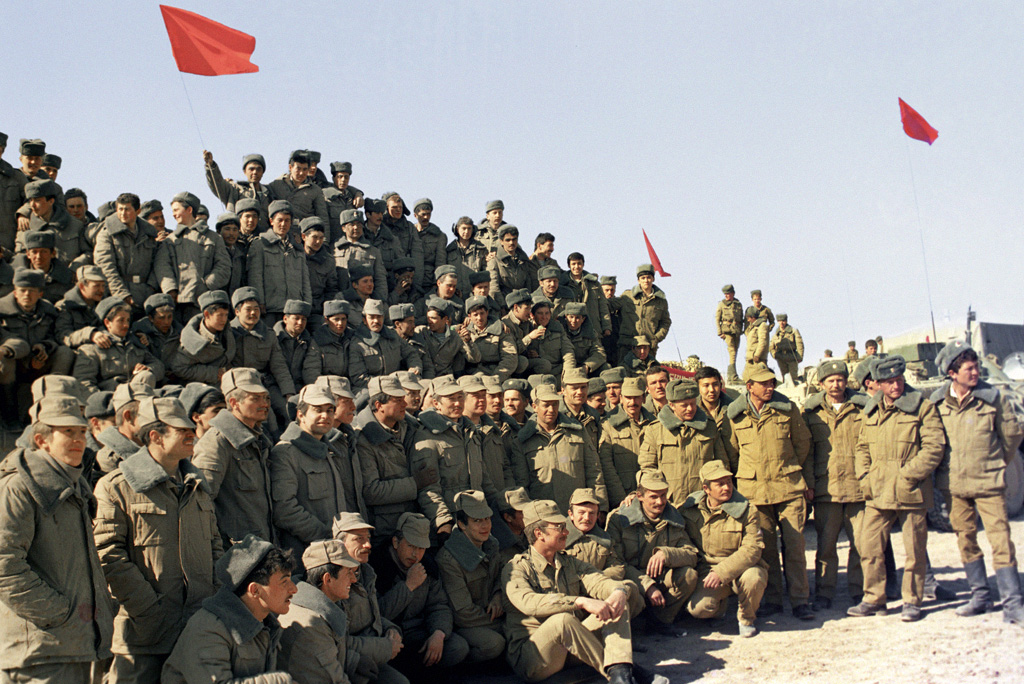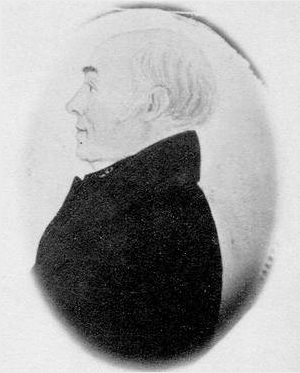|
Edith Clayton
Edith Clayton, née Drummond (September 6, 1920–October 8, 1989) was a Canadian basket maker. Life and work The daughter of James Alexander Drummond and Selena Irene Sparks, who were descendants of Black Loyalists who left the United States in 1812-14, she was born Edith Drummond in Lake Loon, Cherry Brook, Nova Scotia. The basket weaving technique that she used originated in Africa and was passed along from mother to daughter over six generations. The technique learned from her mother, incorporated African and British styles. Clayton used natural dyes obtained from Mi'kmaq women. She showed and sold her baskets at craft fairs across Canada and exhibited at Expo 86 The 1986 World Exposition on Transportation and Communication, or simply Expo 86, was a world's fair held in Vancouver, British Columbia, Canada from May 2 until October 13, 1986. The fair, the theme of which was "Transportation and Communicatio .... In 1977, Clayton was awarded a Queen Elizabeth II Si ... [...More Info...] [...Related Items...] OR: [Wikipedia] [Google] [Baidu] |
Cherry Brook, Nova Scotia
Cherry Brook rural community located to the north of Trunk 7 between Lake Loon and Lake Major, and just a few kilometres east of Dartmouth, Nova Scotia. It has a significant African Nova Scotian population. Cherry Brook is a rural community with a few small farms. Most of the people work at trades in the Halifax Regional Municipality communities of Dartmouth and Halifax. The Baptist Church is the glue that keeps residents together. On Trunk 7 is located the Black Cultural Centre which contains meeting rooms and facilities to meet community needs for meetings and other events. It is a showplace for historical documents and other collections that tell the story of the early development of the Prestons and the many Black families who live in Black communities throughout Nova Scotia. In 1970 the community had an almost exclusively Black population of 700, though it is much smaller today. Cherry Brook is also the home of ''Canadian Idol ''Canadian Idol'' is a Canadian realit ... [...More Info...] [...Related Items...] OR: [Wikipedia] [Google] [Baidu] |
Nova Scotia
Nova Scotia is a Provinces and territories of Canada, province of Canada, located on its east coast. It is one of the three Maritime Canada, Maritime provinces and Population of Canada by province and territory, most populous province in Atlantic Canada, with an estimated population of over 1 million as of 2024; it is also the second-most densely populated province in Canada, and second-smallest province by area. The province comprises the Nova Scotia peninsula and Cape Breton Island, as well as 3,800 other coastal islands. The province is connected to the rest of Canada by the Isthmus of Chignecto, on which the province's land border with New Brunswick is located. Nova Scotia's Capital city, capital and largest municipality is Halifax, Nova Scotia, Halifax, which is home to over 45% of the province's population as of the 2021 Canadian census, 2021 census. Halifax is the List of census metropolitan areas and agglomerations in Canada, twelfth-largest census metropolitan area in ... [...More Info...] [...Related Items...] OR: [Wikipedia] [Google] [Baidu] |
Basket Weaving
Basket weaving (also basketry or basket making) is the process of weaving or sewing pliable materials into three-dimensional artifacts, such as baskets, mats, mesh bags or even furniture. Craftspeople and artists specialized in making baskets may be known as basket makers and basket weavers. Basket weaving is also a rural craft. Basketry is made from a variety of fibrous or pliable materials—anything that will bend and form a shape. Examples include pine, straw, willow (esp. osier), oak, wisteria, forsythia, vines, stems, fur, hide, grasses, thread, and fine wooden splints. There are many applications for basketry, from simple mats to hot air balloon gondolas. Many Indigenous peoples are renowned for their basket-weaving techniques. History While basket weaving is one of the widest spread crafts in the history of any human civilization, it is hard to say just how old the craft is, because natural materials like wood, grass, and animal remains decay naturally and con ... [...More Info...] [...Related Items...] OR: [Wikipedia] [Google] [Baidu] |
Black Loyalist
Black Loyalists were people of African descent who sided with Loyalists during the American Revolutionary War. In particular, the term referred to men enslaved by Patriots who served on the Loyalist side because of the Crown's guarantee of freedom. Some 3,000 Black Loyalists were evacuated from New York to Nova Scotia; they were individually listed in the '' Book of Negroes'' as the British gave them certificates of freedom and arranged for their transportation. More than 3,000 Black Loyalists relocated to Nova Scotia after the British defeat in 1783, settling in Birchtown, Digby, Guysborough County, Annapolis Royal, Preston and Halifax. By 1785, the majority of Black Loyalist communities had formed independent Black churches, and many had also established their own schools. However, the Black Loyalists were consistently denied land grants and exploited as a source of free labor by the colonial government. Some of the European Loyalists who emigrated to Nova Scotia bro ... [...More Info...] [...Related Items...] OR: [Wikipedia] [Google] [Baidu] |
Mi'kmaq
The Mi'kmaq (also ''Mi'gmaq'', ''Lnu'', ''Mi'kmaw'' or ''Mi'gmaw''; ; , and formerly Micmac) are an Indigenous group of people of the Northeastern Woodlands, native to the areas of Canada's Atlantic Provinces, primarily Nova Scotia, New Brunswick, Prince Edward Island, and Newfoundland, and the Gaspé Peninsula of Quebec as well as Native Americans in the northeastern region of Maine. The traditional national territory of the Mi'kmaq is named Mi'kma'ki (or Mi'gma'gi). There are 66,748 Mi'kmaq people in the region as of 2023 (including 25,182 members in the more recently formed Qalipu First Nation in Newfoundland). According to the Canadian 2021 census, 9,245 people claim to speak Mi'kmaq, an Eastern Algonquian language. Once written in Mi'kmaw hieroglyphic writing, it is now written using most letters of the Latin alphabet. The Mi'kmaq, Maliseet, and Pasamaquoddy nations signed a series of treaties known as the Covenant Chain of Peace and Friendship Treaties with ... [...More Info...] [...Related Items...] OR: [Wikipedia] [Google] [Baidu] |
Expo 86
The 1986 World Exposition on Transportation and Communication, or simply Expo 86, was a world's fair held in Vancouver, British Columbia, Canada from May 2 until October 13, 1986. The fair, the theme of which was "Transportation and Communication: World in Motion – World in Touch", coincided with Vancouver's centennial and was held on the north shore of False Creek. It was the second time that Canada held a world's fair, the first being Expo 67 in Montreal (during the Canadian Centennial). It was also the third world's fair to be held in the Pacific Northwest in the previous 24 years as of 1986 and to date, it still stands as the last world's fair to be held in North America. It was a great success, drawing over 22 million visitors, double that of Knoxville in 1982 and three times that of Louisiana in 1984. History The logo of three interlocking rings to make the 86 in the logo stood for the three main modes of transportation; land, air, and water. Background Up until t ... [...More Info...] [...Related Items...] OR: [Wikipedia] [Google] [Baidu] |
East Preston, Nova Scotia
East Preston is an expansive rural Black Nova Scotian community located in eastern Halifax Regional Municipality, Nova Scotia, in Atlantic Canada. The population at the time of the 2016 census was 869. Geography East Preston is within the Halifax Regional Municipality, Nova Scotia, Halifax Regional Municipality. It was located East of another rural area, Preston, Nova Scotia, Preston. East Preston is accessible off Nova Scotia Trunk 7, Trunk 7 or Nova Scotia Route 207, No 207 on Marine Drive (Nova Scotia), Marine Drive through the Nova Scotia Route 328, Ross Road or the Mineville, Nova Scotia, Mineville Road. History East Preston was founded in the 19th century. It is believed to have been named after Preston, Lancashire, England or Thomas Preston (British Army officer), Thomas Preston, a British army officer involved in the Boston Massacre during the American Revolution. While it is often thought that the community is named after Rev. Richard Preston (clergyman), Richard Presto ... [...More Info...] [...Related Items...] OR: [Wikipedia] [Google] [Baidu] |
Sylvia Hamilton
Sylvia D. Hamilton is a Canadian filmmaker, writer, poet, and artist. Based in Grand Pre, Nova Scotia, her work explores the lives and experiences of people of African descent. Her special focus is on African Nova Scotians, and especially women. In particular, her work takes the form of documentary films, writing, public presentations, teaching, mentoring, extensive volunteer work and community involvement. She has uncovered stories of struggles and contributions of African Canadians and introduced them to mainstream audiences. Through her work, she exposes the roots and the presence of systemic racism in Canada. She aims to provide opportunities for Black and Indigenous youth through education and empowerment. Personal life Hamilton grew up in Beechville, a community founded by the Black Refugees from the War of 1812, located west of Halifax, Nova Scotia. She was the second youngest child of six to Gerald and Marie Hamilton. Gerald was a labourer and Marie was a teacher in ... [...More Info...] [...Related Items...] OR: [Wikipedia] [Google] [Baidu] |
1920 Births
Events January * January 1 ** Polish–Soviet War: The Russian Red Army increases its troops along the Polish border from 4 divisions to 20. ** Kauniainen in Finland, completely surrounded by the city of Espoo, secedes from Espoo as its own market town. * January 7 – Russian Civil War: The forces of White movement, Russian White Admiral Alexander Kolchak surrender in Krasnoyarsk; the Great Siberian Ice March ensues. * January 10 ** The Treaty of Versailles takes effect, officially ending World War I. ** The League of Nations Covenant enters into force. On January 16, the organization holds its first council meeting, in Paris. * January 11 – The Azerbaijan Democratic Republic is recognised de facto by European powers in Palace of Versailles, Versailles. * January 13 – ''The New York Times'' Robert H. Goddard#Publicity and criticism, ridicules American rocket scientist Robert H. Goddard, which it will rescind following the launch of Apollo 11 in 1969. * Janua ... [...More Info...] [...Related Items...] OR: [Wikipedia] [Google] [Baidu] |
1989 Deaths
1989 was a turning point in political history with the " Revolutions of 1989" which ended communism in Eastern Bloc of Europe, starting in Poland and Hungary, with experiments in power-sharing coming to a head with the opening of the Berlin Wall in November, the Velvet Revolution in Czechoslovakia and the overthrow of the communist dictatorship in Romania in December; the movement ended in December 1991 with the dissolution of the Soviet Union. Revolutions against communist governments in Eastern Europe mainly succeeded, but the year also saw the suppression by the Chinese government of the 1989 Tiananmen Square protests in Beijing. It was the year of the first Brazilian direct presidential election in 29 years, since the end of the military government in 1985 that ruled the country for more than twenty years, and marked the redemocratization process's final point. F. W. de Klerk was elected as State President of South Africa, and his regime gradually dismantled th ... [...More Info...] [...Related Items...] OR: [Wikipedia] [Google] [Baidu] |
Canadian Basket Weavers
Canadians () are people identified with the country of Canada. This connection may be residential, legal, historical or cultural. For most Canadians, many (or all) of these connections exist and are collectively the source of their being ''Canadian''. Canada is a multilingual and multicultural society home to people of groups of many different ethnic, religious, and national origins, with the majority of the population made up of Old World immigrants and their descendants. Following the initial period of French and then the much larger British colonization, different waves (or peaks) of immigration and settlement of non-indigenous peoples took place over the course of nearly two centuries and continue today. Elements of Indigenous, French, British, and more recent immigrant customs, languages, and religions have combined to form the culture of Canada, and thus a Canadian identity and Canadian values. Canada has also been strongly influenced by its linguistic, geographic, an ... [...More Info...] [...Related Items...] OR: [Wikipedia] [Google] [Baidu] |
Black Nova Scotians
Black Nova Scotians (also known as African Nova Scotians, Afro-Nova Scotians, and Africadians) are Black Canadians whose ancestors primarily date back to the Colonial history of the United States, Colonial United States as Slavery in the United States, slaves or Freeman (Colonial), freemen, later arriving in Nova Scotia, Canada during the 18th and early 19th centuries. As of the Canada 2021 Census, 2021 Census of Canada, 28,220 Black people live in Nova Scotia, most in Halifax, Nova Scotia, Halifax. Since the 1950s, numerous Black Nova Scotians have migrated to Toronto for its larger range of opportunities.Confederation's Casualties: The "Maritimer" as a Problem in 1960s Toronto Acadiensis. Retrieved 2014-02-04. [...More Info...] [...Related Items...] OR: [Wikipedia] [Google] [Baidu] |








